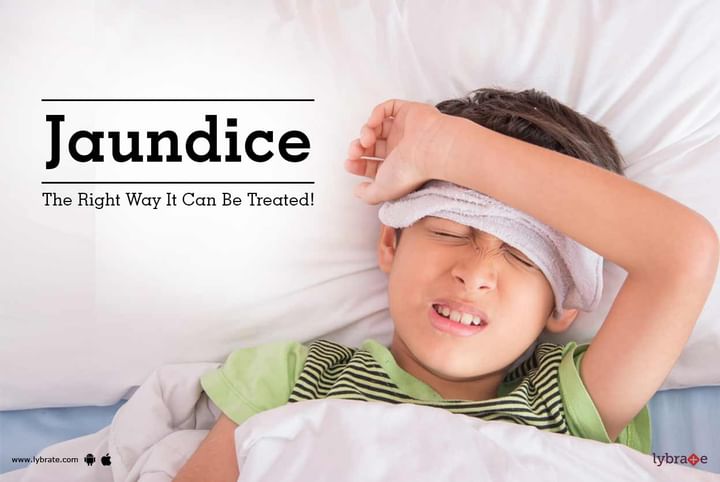Jaundice - The Right Way It Can Be Treated!
Jaundice is a medical condition where the bilirubin level shoots up in the blood of the affected person. Also referred to as icterus, the condition may affect adults as well as newborn babies (Neonatal Jaundice), whereby the skin and the white part of the eye (sclera) appears yellowish in color (due to the accumulation of bilirubin).
Bilirubin is the bile pigment that results from the breakdown of hemoglobin (when the RBC cells breakdown). The bilirubin thus produced is released into the plasma. The liver then filters the released bilirubin for further metabolism. In the case of a diseased condition, injury or infection to the liver, it fails to remove the bilirubin from the bloodstream. As a result, there is an abnormal rise in the bilirubin level in the blood (Hyperbilirubinemia), resulting in jaundice. In jaundice, Bilirubin can go upto much higher levels. At 2.5-3 it just starts to get manifest as yellow eyes. Obstructive jaundice may require an endoscopic procedure or surgery.
Types of jaundice:
Jaundice may be of the following types:
- Hepatocellular jaundice: In Hepatocellular jaundice, the elevated bilirubin level in the blood is an outcome of a liver disease or an injury (altering the normal functioning of the liver).
- Hemolytic jaundice: Here, the increased level of bilirubin in the blood results from an increased breakdown of the RBCs (Hemolysis).
- Obstructive jaundice: As the name suggests, Obstructive jaundice results from an obstruction in the bile duct. As a result, the bilirubin does not get filtered and remains in the liver.
Factors contributing to jaundice:
The increased buildup of bilirubin may be an outcome of
- Obstruction and inflammation of the bile duct.
- Chronic liver disease including liver cirrhosis and hepatitis.
- Pancreatic Cancer.
- Hemolytic anemia: It is a condition resulting from increased breakdown of RBCs.
- Gilbert's syndrome.
- Certain medications may also interfere and alter the normal functioning of the liver (steroids, birth control pills, and acetaminophen, to name a few).
- In cholestasis, the bile (conjugated bilirubin), instead of getting eliminated, remains in the liver.
Symptoms:
The symptoms associated with jaundice include
- The skin (particularly, the face, hands, nails, and feet) and the sclera appear yellowish.
- The urine appears dark in color.
- Fever, vomiting, tiredness, and loss of body weight.
- Abdominal pain (mild to severe).
- The stool appears pale in color.
- Itchiness or Pruritus.
Diagnosis and treatment:
The earlier the diagnosis, more effective is the treatment.
- Jaundice can be diagnosed by
- Physical examination.
- Bilirubin tests to determine the total bilirubin level.
- CBC is used to determine the levels of RBCs, WBCs, and platelets.
- Liver function tests.
The treatment for jaundice involves identifying the underlying factor responsible for the condition and treating it.
- In the case of obstructive jaundice, operation helps to improve the condition.
- Patients with hepatitis may benefit from antiviral medicines as well as steroids.
- In hemolytic anemia, use of iron supplements helps to improve the condition.
- Avoid oily and spicy foods, smoking and drinking.
- Rest as much as possible.
In case you have a concern or query you can always consult an expert & get answers to your questions!



+1.svg)
